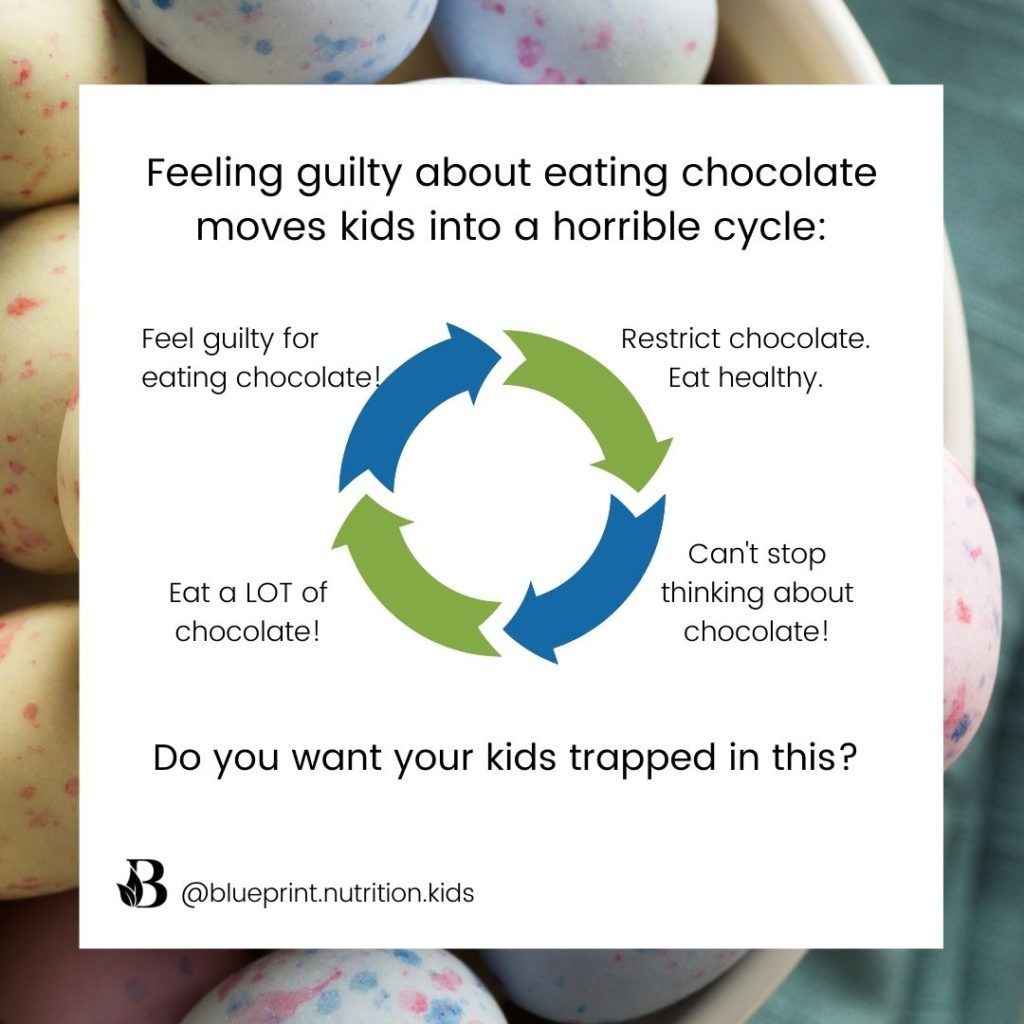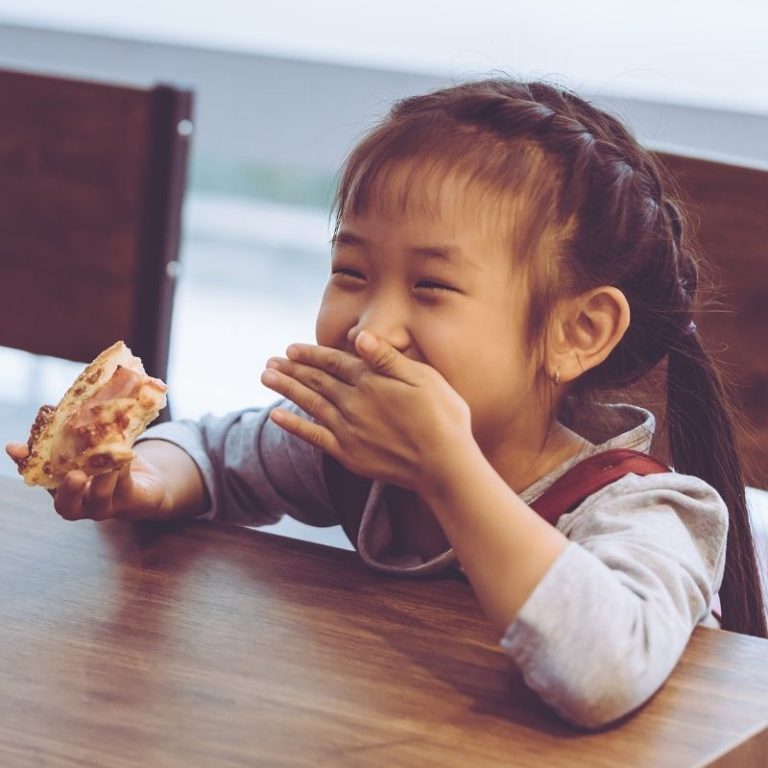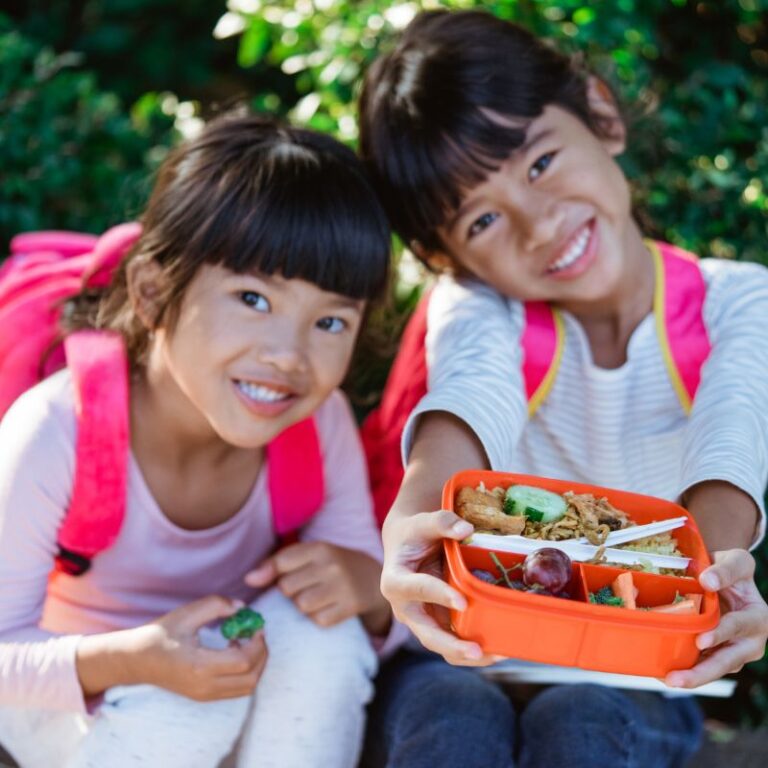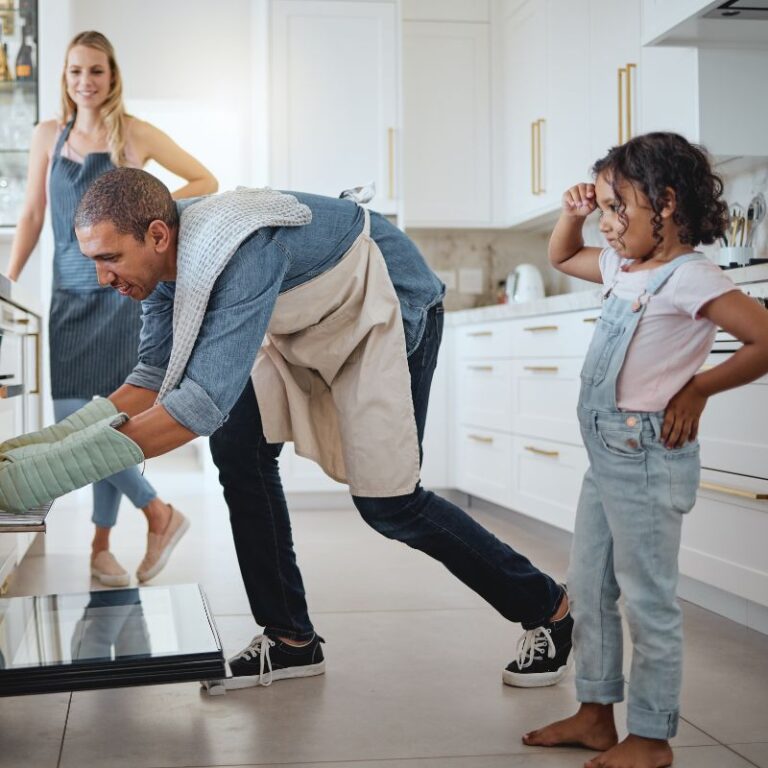Have you ever said to your kid or maybe thought in your head “Are you really going to eat that?” or “Let’s go for a walk to burn off those chocolate calories.” Although parents have the best intentions in mind when it comes time to feeding their kids and their overall health, sometimes the messages that we share inadvertently make kids feel really bad or guilty about eating certain foods.
Why do we feel guilty about eating certain foods? Why does this feeling of food guilt almost feel more natural than experiencing the joy of eating? Should we be particularly concerned about our kids experiencing food guilt? How do we remove food guilt from the family table?
Before we can answer those questions, let’s start by answering these questions: what is guilt? And more specifically, what is food guilt?
What is guilt?
Guilt as defined by the Cambridge dictionary is “a feeling of worry or unhappiness that you have because you have done something wrong, such as causing harm to another person.”
Stealing, lying cheating, hurting someone etc. are all good examples of healthy or normal guilt that children may experience.
But here is the thing about guilt. Kids aren’t born with a moral compass that tells them not to steal, lie, cheat or hurt others. They learn that they shouldn’t do these things from parents, caregivers, and other adult mentors in their life.
Essentially, guilt is taught.
What about food guilt?
Let’s take the above definition for guilt and add the word “food” in front of guilt.
Food guilt… “a feeling of worry or unhappiness that you have because you have eaten something wrong, such as causing harm to another person.” I’m sure you’re laughing now because since when was eating chocolate or chips a crime?
Just like guilt is taught, so too is the concept of food guilt. Have you ever said “chocolate is my guilty pleasure”? Food guilt is ingrained in our society. Seemingly passed down from generation to generation without any thought or reflection on the harm it is causing.
The concept of food guilt is rooted in the notion that there are “good” and “bad” foods (or now more often disguised as “everyday” and “sometimes” foods). This categorization of foods is everywhere, teeming in our diet-culture drenched society where “perfect” eating (and a “perfect” body) is the ultimate goal.
Food guilt is taught both directly and indirectly to our kids.
The direct teaching of food guilt happens when we label foods as “good” and “bad” in front of kids – e.g. school curriculum encouraging teachers to tell students to “eat healthy foods first” or parents restricting a “bad” food because it’s unhealthy. Indirect teaching of food guilt happens when kids overhear messages like a parent saying “I shouldn’t have eaten that chocolate. I have to make up for it now” or when a TV show communicates similar messages through its characters.
What’s wrong with categorizing foods?
Placing foods into good and bad categories moralizes food and makes kids feel “good” if they eat “healthy foods” and “bad” if they eat “unhealthy foods”. This dichotomous, black and white style of thinking about foods is the root of food guilt and it’s not helping your kids develop a good relationship with food.
Research supports that food guilt is related to body dissatisfaction and increased risk for dieting behaviours and ultimately disordered eating or easting disorders.
Food guilt and categorizing/moralizing food actually pushes many kids into a restrict-binge-guilt cycle. Perhaps at one time or another you’ve been stuck in this cycle too?

Here’s how the cycle works. Parents or caregivers communicate that a highly desired food (i.e. chocolate) is bad and restrict that food in the home. The child feels bad about liking/wanting chocolate and can’t stop thinking about it. When they finally get access to some chocolate (holidays, birthday party etc.), they eat way more than if it had not been restricted in the first place. Why? Because of their perceived fear of future restriction. Parents are upset at the large amount of chocolate that was consumed and go back to restricting again. And thus repeats the cycle.
Rinse. Wash. Repeat.
How not to pass on food guilt to your kids
There is alternative path to choose moving forward that doesn’t lock you or your kids into a vicious cycle. You can kick food guilt to the curb!
In my 3 month coaching program the Feeding Fix, I help families identify where food guilt and moralizing of foods might be sneaking in and contributing to their feeding battles. This is a process and it takes time. Below I’m sharing with you the first few steps to begin removing that food guilt from your home.
5 steps to remove food guilt from your family table.
1. Self-awareness.
Are there ways that you are directly or indirectly communicating the concept of food guilt to your child? Grab a notepad or start a fresh note on your phone and record any feelings of food guilt/shame as they pop into your head or come out in things that you say to yourself or your kids over the next week. The first step in moving forward starts with introspection and self-awareness.
2. Others-check.
Are there other people, places or things in your child’s environment that are communicating a message of food guilt? The school? Sport coaches? Magazines? TV shows? Books? You-tubers? Social media? Friends? Family members? Confronting others who may be communicating a message of food guilt can be tricky at the best of times. I encourage you to start with respectful conversations and to avoid finger-pointing.
3. Let go of the food rules and restriction.
Remember what you did when someone told you “don’t do that” or “you can’t do that” … you likely moved quickly to do that EXACT thing you were told not to do and wanted to do it 10 times more than before!
Reflect on food rules that you were taught and may still be carrying about “good” and “bad” foods. (Go back to the restrict-binge-guilt cycle). When you remove the rule that “bad” foods needs to be restricted, you take that food off of a pedestal for yourself and your kids and food loses its control and power. No more feelings of being out of control.
Flush food rules and restriction down the toilet and you’ll see food guilt go along with it.
On that note …
4. Throw away labels. Call food by its name.
Foods have names and we can use those instead of categories. Call carrots, carrots. Call ice cream, ice cream. We don’t need to refer to foods as “everyday” or “sometimes” foods. Nor do we need to call foods treats or superfoods.
You may be wondering – but how will my kids learn to eat a balanced diet?
They’ll learn that from your modelling, by following the division of responsibility in feeding where you provide the food and they decide if/how much they want to eat. There’s lots of time to teach about nutrients when their brains can handle it – closer to the middle school years and beyond.
5. Enjoy all foods with your kids.
Yes. All foods fit.
Yes. You can sit down and enjoy chocolate WITH your kids, instead of hiding in the pantry at nap-time or when they’re in bed sleeping, hoping no one will see you.
Modelling the enjoyment of ALL foods is a fantastic starting place to show your kids that food guilt has no room at your table.
Foods high in sugar, salt or fat that are commonly associated with food guilt are not going anywhere anytime soon. As parents, it’s SO important to develop an approach to these foods that works for your family and kids and nurtures a good relationship with food and health. If you’re ready to end the stress of trying to figure this out on your own, please reach out!








